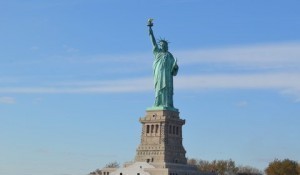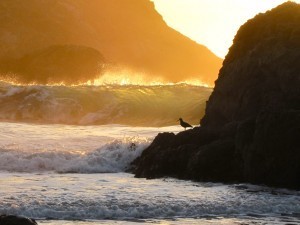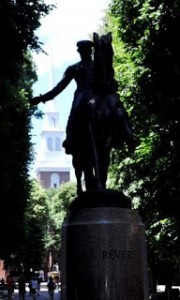Lisa Niver's Blog: We Said Go Travel, page 473
August 22, 2013
Birthday in New York
The trip to New York was a present to me on my fiftieth birthday and a good enough excuse to be extravagant so I booked my stay at a popular expensive hotel in Times Square, the pulsating hub of Manhattan. Over weeks, I’d been jotting entries in my red notebook for my five- day itinerary in New York, including a “things to do” list sourced from oodles of information on the internet. Yet excitedly, making my way to the elevators, I grabbed maps and umpteen brochures at the reception desk just in case I’d missed something. Taking a shower, I quickly unpacked my suitcase, transferring my camera and other essentials into my carry bag and stepped out.
It was early evening and seemed a good time to look out for the popular landmarks of Times Square. I was surprised that, I already felt a sense of anonymity and independence in the midst of strangers either rushing to the subway station or shuffling to see the signs and the sights like myself. One could easily identify the tourists from the regulars who worked in the offices from their clothes, their demeanour and pace of walking. The billboards announcing the shows on Broadway seemed familiar and impulsively, I joined the line at the counter selling Broadway show tickets on the TKTS Island. It was my lucky day for I got the last ticket available for Mama Mia allowing me time for dinner and a dash to the hotel.
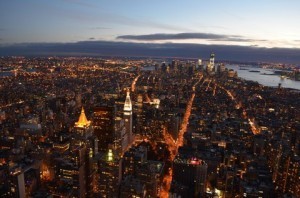 The show was spectacular and I eagerly joined the clapping and feet tapping around me and even stood up dancing during the final medley of ABBA hits. It was very special as it my first ever Broadway musical on Broadway and unexpectedly on my first day in New York. Walking back to my hotel, I gazed up at the blazing neon lights wondering if they were dimmed after midnight and whether they really visible from spacecraft.
The show was spectacular and I eagerly joined the clapping and feet tapping around me and even stood up dancing during the final medley of ABBA hits. It was very special as it my first ever Broadway musical on Broadway and unexpectedly on my first day in New York. Walking back to my hotel, I gazed up at the blazing neon lights wondering if they were dimmed after midnight and whether they really visible from spacecraft.
At first, I was overwhelmed by the array of the scenes and sights that New York City offers. The variety and diversity is awesome, whether its museums, art, music, buildings and architecture, music, parks, food, shopping, fashion or whatever one’s interests are, so the visitor has the freedom to choose from several options. Almost every place is accessible by public transport, which is cheap and easily manageable independently by oneself on the MTA’s one-day pass.
Needless to say, I could have taken one of the ubiquitous daily sightseeing tour deals on the red double decked buses. But the excitement and freedom of getting around on my own was hard to resist. My first stop was the Cloisters Museum, a gem on the Hudson River. As advised by the hotel concierge, I boarded the uptown M4 bus and got a full window-side view of Central Park, the Museums, and Columbia University, Washington Heights beyond Harlem. The museum itself is beautiful yet humbling edifice with its astounding art collection and gardens and enjoyable on a bright summer day.
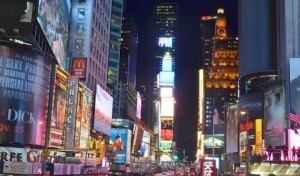 Enthused by the medieval European flavour of Cloisters, I chose going to Little Italy for dinner rather than China Town, in Lower Manhattan. Given the long distance, this time I preferred the subway and got the feel of rush hour crowds in the express trains. The dinner was pleasurable and waiting for my order, I pulled out the map to discover that I could easily go across to Brooklyn and catch the lights of Manhattan. Refreshed, I walked south to China Town and took a detour to City Hall, and proceeded by subway to Brooklyn. Coming out at the Municipal Building exit at Borough Hall, I found I was outside the beautiful Court House complex and within the proximity of the historic district which had several century old homes still standing. From there a quick walk to the promenade on the East River facing Lower Manhattan. The majestic Statue of Liberty in the distant left and closer to the right the Brooklyn Bridge were clearly visible. Stopping for coffee and cake at a quaint small cafe on Montague Street, I returned to Manhattan by subway.
Enthused by the medieval European flavour of Cloisters, I chose going to Little Italy for dinner rather than China Town, in Lower Manhattan. Given the long distance, this time I preferred the subway and got the feel of rush hour crowds in the express trains. The dinner was pleasurable and waiting for my order, I pulled out the map to discover that I could easily go across to Brooklyn and catch the lights of Manhattan. Refreshed, I walked south to China Town and took a detour to City Hall, and proceeded by subway to Brooklyn. Coming out at the Municipal Building exit at Borough Hall, I found I was outside the beautiful Court House complex and within the proximity of the historic district which had several century old homes still standing. From there a quick walk to the promenade on the East River facing Lower Manhattan. The majestic Statue of Liberty in the distant left and closer to the right the Brooklyn Bridge were clearly visible. Stopping for coffee and cake at a quaint small cafe on Montague Street, I returned to Manhattan by subway.
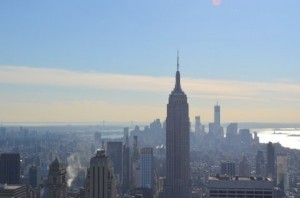 Emboldened by my experience of getting around, at breakfast next morning, I finalised the detailed itinerary for the rest of my trip to include the United Nations, Battery Park, 9/11 Memorial, Wall Street, Statue of Liberty and Ellis Island and mid-town landmarks of Rockefeller Plaza, Saks, St. Patrick’s Cathedral and Empire State Building. One day was reserved for Central Park and the museums, with an evening at Lincoln Centre and if lucky again, maybe tickets for a concert or ballet performance or at least the tour. For me, this was a dream come true, the best birthday ever in New York, NY – A place where you can be independent and feel free.
Emboldened by my experience of getting around, at breakfast next morning, I finalised the detailed itinerary for the rest of my trip to include the United Nations, Battery Park, 9/11 Memorial, Wall Street, Statue of Liberty and Ellis Island and mid-town landmarks of Rockefeller Plaza, Saks, St. Patrick’s Cathedral and Empire State Building. One day was reserved for Central Park and the museums, with an evening at Lincoln Centre and if lucky again, maybe tickets for a concert or ballet performance or at least the tour. For me, this was a dream come true, the best birthday ever in New York, NY – A place where you can be independent and feel free.
About the Author: Sreelakshmi Gururaja worked for the United Nations Children’s Fund (UNICEF) for over twenty years. Upon retirement in 2005, she returned to her hometown, Bangalore, India and resumed her hobbies of reading, writing and knitting. She is currently compiling an anthology of stories from her childhood for her grandchildren and extended family.
The post Birthday in New York appeared first on We Said Go Travel.
Malaysia: Driving Blind in Kuala Lumpur
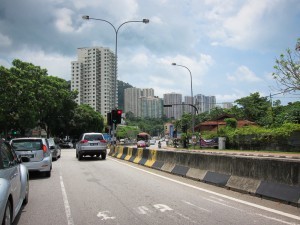 We drove to Kuala Lumpur so we could catch a flight to China the next morning. There was no point in staying at an expensive hotel in the city centre. The Family Hotel in Klang was a little old, but the shabby flooring and fixtures were clean.
We drove to Kuala Lumpur so we could catch a flight to China the next morning. There was no point in staying at an expensive hotel in the city centre. The Family Hotel in Klang was a little old, but the shabby flooring and fixtures were clean.
I had arranged to meet a friend at a mall in Kuala Lumpur that evening. I debated whether to take a taxi from Klang — I even had the front-desk staff call and find out the cost: 60 ringgit each way, about $40 for the round trip. That seemed too much (my sense of a dollar’s value having been inflated after six months in Asia). Shawn and I reviewed the route on his iPad, and I set off with adrenaline-fueled confidence.
After successfully backtracking from our hotel onto Highway 2, I was imagining texting Shawn to tell him the whole thing had been easy. Roads stacked on top of each other and slithered everywhere like the head of Medusa, but I held my course. There was the mall, multi-storied and decked in neon. I turned off the main road, but just at the spot where I needed to shift into the left lane, I hesitated. Too late! Now there was a barrier between the lanes, and I couldn’t turn into the parking lot.
I turned around and remapped my route. This time, Google Maps betrayed me, instructing me to take a left across a concrete island. So I was spit back onto the main road.
Recalculate route. Recalculate route. I kept missing turns or going the wrong way and got terribly off track. I finally circled back around, but the battery on the iPad was dying and I was already late. By the time I pulled into the first mall parking lot I saw and called my friend, my nerves were jumping. What a relief when R. met me by Marks and Spencer. I had a few hours’ respite until the drive home.
We closed out the restaurant, and just after 10 pm R. walked me to my car. That’s when the fun started, because both the iPad and my cell phone were dead. I would have to drive blind, navigating by my wits and a vague idea of where the hotel was in Klang.
I started well, getting back onto the road I came in on. But I didn’t know how to get onto Highway 2—there were no exit signs. The roads were a nest of vipers and I couldn’t make head nor tail of them.
Then I came to a toll booth before another major highway, and I knew I was in trouble. I pulled over, put the hazard lights on, and got out. A couple was leaving the nearby McDonald’s restaurant. On their way out, she rolled down her passenger window so I could speak to him in the driver’s seat. He explained that I needed to go through the toll, then do a U-turn and get on the Shah Alam Highway 5 toward Klang. I was so grateful for their help, and told them so.
I got onto Highway 5 and drove for what seemed like ages. I felt, strangely, the way I remembered feeling in the wilderness of Algonquin Park back home in Canada—adrift in my canoe, surrounded by trackless lakes and forests, with a narrow window of safety if I stayed on the path marked on my map. I clutched the steering wheel of my little Myvi boat and held on.
Finally I pulled over in a place that looked like Klang and went into a Chinese massage shop that was still open after 11 pm at night. I explained my predicament to the receptionist and asked whether she could call me a taxi. Everyone in the waiting room got involved, half-a-dozen men and women. One man made several calls and finally found a driver who could take me to the Family Hotel in Klang. I thanked him profusely for his persistence, and before I left he said, “We have to protect the customer!”
The taxi arrived and I followed, calming myself by memorizing the license plate. At last we arrived at the hotel after midnight! I texted R. to tell her I was okay and climbed into bed, shaken but proud, and grateful, and lucky.
Up until I missed that first turn into the mall, I had felt very good about myself. Then I missed the turn, and I wondered whether I could still feel good even though I hadn’t done the drive perfectly. Did my brave act count even though I made mistakes? I decided that it did. In adversity, I had adjusted and not freaked out. I had survived my blind drive in Kuala Lumpur.
About the Author: Alison Gresik is a writer and creativity coach living in Vancouver, BC. With her husband and two young kids, she travelled Asia and Europe for a year, a project they called Operation Hejira. Alison is now writing a memoir about their time abroad, titled Pilgrimage of Desire: An Explorer’s Intimate Journal of Art and Flow as a Way of Life.
The post Malaysia: Driving Blind in Kuala Lumpur appeared first on We Said Go Travel.
Myanmar: Bus from Bagan to Inle Lake (video)
WATCH: 31 Bus from Bagan to Inle Lake, Myanmar (Burma)
We decided to take the Tourist bus from Bagan to Inle Lake. We woke up at 6:30am, had a quick breakfast at 6:45am and a 7am bus pickup for the 7:30am bus, but we got picked up after 7:30am, and the bus left around 8am and made it to Inle Lake around 4pm. It costs $5usd for Inle Lake passes. We had called in advance to arrange to stay at May Guesthouse as the Lonely Planet said it had the best breakfast. When we arrived, the power was out. I was excited to make it to Inle Lake and to celebrate my 45th birthday tomorrow (October 18) with George at Inle Lake. October 17, 2012
This movie is from our 28 days in Myanmar (Burma) from September 28, 2012 to October 26, 2012 and our year TRIP in South East Asia, see all the videos from our trip.
Our memoir, Traveling in Sin, is available at Amazon; it is a HOT NEW RELEASE!
Traveling in Sin: News from this Memoir's First week! from Lisa Niver Rajna
Lisa Niver Rajna and George Rajna are co-authors of Traveling in Sin and co-founders of We Said Go Travel. They are accomplished writers, speakers and travelers who are members of the Traveler’s Century Club, a unique travel club limited to travelers who have visited one hundred or more countries. We Said Go Travel is a global community of over three hundred writers with articles from every continent. Stories are shared with photos and video from a perspective of the transformative power of travel. We Said Go Travel has hosted live and online events as well as travel writing contests. We Said Go Travel has three travel writing competitions a year. http://www.wesaidgotravel.com/
The post Myanmar: Bus from Bagan to Inle Lake (video) appeared first on We Said Go Travel.
August 21, 2013
The Pace of Freedom in Brookings, Oregon
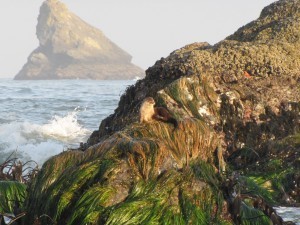 Freedom is slow. It lacks the weariness and worry of the workday. Freedom strolls through the hours as if it had all the time in the world. Every moment seems to matter and to sharpen into clarity. No more the wicked counting of minutes. No more the squeal of the alarm clock. No more the bustle and heat of the work week.
Freedom is slow. It lacks the weariness and worry of the workday. Freedom strolls through the hours as if it had all the time in the world. Every moment seems to matter and to sharpen into clarity. No more the wicked counting of minutes. No more the squeal of the alarm clock. No more the bustle and heat of the work week.
Freedom has all the time in the world. It means sitting on the couch all day watching old movies while the rain pours outside. It means rising with the sun and losing oneself on weatherworn paths bordered by spicy ferns and ancient redwoods. It means getting in the car and driving through the curves and shadows of Highway 101, just because you can.
In this place, the pace of life leaves room for freedom. Ralph Waldo Emerson supposed that we must, “Adopt the pace of nature; her secret is patience.” Nowhere more than the beach, is the pace of nature more clear: the daily ebb and flow of the tides, the monthly pull of the moon. Every day the salt and spray move back imperceptibly to reveal the pools and puddles cupped in the rocks. The starfish reach out their patterned arms to hug the stones, and the sea anemones waft gently in a breeze that only they can feel. The little fish wink out of sight as the shadow of a gull passes over their sanctuaries. Every month the moon lifts herself, like a kite filled by the sharp briny wind of the sea, high into the sky to watch the silver edged waves crash in the darkness.
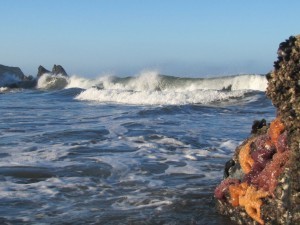 So, there is a structure of sorts. Nature keeps her own time, but in her pace there is freedom. Only nature prods you to do something. Hunger pushes you to munch on plump blackberries or to create a new dish entirely on your own. Your lungs cry for deep gulps of salty air as your tennis shoes pound out a rhythm on the sand. The same keen air urges you closer to the glowing embers of driftwood and to curl your fingers around a fiery mug of Oregon Chai.
So, there is a structure of sorts. Nature keeps her own time, but in her pace there is freedom. Only nature prods you to do something. Hunger pushes you to munch on plump blackberries or to create a new dish entirely on your own. Your lungs cry for deep gulps of salty air as your tennis shoes pound out a rhythm on the sand. The same keen air urges you closer to the glowing embers of driftwood and to curl your fingers around a fiery mug of Oregon Chai.
In this place you have the freedom to set your own pace. You can paddle a sea kayak at the brisk pace of the frisky seals and sea otters, or you can sit and float with the kelp and the puffins. No one will tell you how fast to go. Some, like my neighbor, decide in favor of a bracing mile-long swim around Bird Island. Others meander down to the harbor for a leisurely game of chess and a cup of coffee at the Salty Dog Coffee Bar.
The days seem longer in the poignant brevity of each moment. Your eye catches a flash of deep purple and blue from a happy hydrangea that thrives in the damp air. Your fingers test the smoothness of a pebble, searching for the warmth of an inner glow that means it’s an agate.
Your mind stills because you know that at this pace, in this place, you are free.
About the Author: Serena Hamann: I am a college student majoring in International Relations and Spanish. I just returned from a semester abroad in Oviedo, Spain. I live in Southern-Central Oregon, and my parents recently acquired a house on the Coast. I’m enjoying the pleasures of home after being away for so long. Find me on Facebook.
The post The Pace of Freedom in Brookings, Oregon appeared first on We Said Go Travel.
Philippines: Biking Bohol
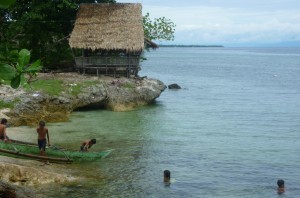 Comprising more than 7000 islands, the Republic of the Philippines offers travellers an extensive catalogue of potential experiences: From hiking the ancient rice terraces of Sagada to rafting the rapids at Pagsanjan; from climbing dormant volcanoes to diving diverse reefs.
Comprising more than 7000 islands, the Republic of the Philippines offers travellers an extensive catalogue of potential experiences: From hiking the ancient rice terraces of Sagada to rafting the rapids at Pagsanjan; from climbing dormant volcanoes to diving diverse reefs.
With so many headline attractions, it can be difficult to decide how to spend one’s time. Panglao, a small island in the Visayas, rarely tops the list. Those who do visit usually center their itineraries on the stretch of white sand known as Alona Beach.
The more introverted cousin of world-famous Boracay, Alona offers access to world class diving and snorkeling. Neighbouring Bohol’s major drawcards – the mound-like chocolate hills, the butterfly farm, and the sanctuary that shelters its tiny marsupial mascot, the tarsier – can also be covered off in a day trip as touted by one of the many tour companies operating along the waterfront.
But having grown use to a slightly slower pace of discovery, my husband and I set out to explore Panglao by bike. We’ve torn the relevant section from our guidebook, and plan to visit the short list of sights the authors have deemed noteworthy. These ‘places of interest’ are dotted around Panglao’s perimeter, which is also conveniently punctuated by appealing-sounding eateries.
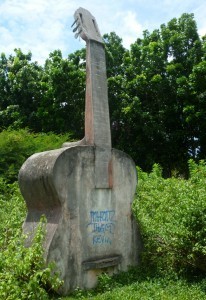 And so, with our snorkels slung over our handlebars, we head for our first destination, Hinagdanan Cave. As we arrive, the vendors are still setting up, clowning about as they arrange the hats, shirts, snacks and bottled drinks that will later be sold to vanloads of visitors. The cave harbors a tiny freshwater lagoon where it is possible to swim, but the morning sun has not yet warmed the cave’s dark interior enough to make that an attractive proposition.
And so, with our snorkels slung over our handlebars, we head for our first destination, Hinagdanan Cave. As we arrive, the vendors are still setting up, clowning about as they arrange the hats, shirts, snacks and bottled drinks that will later be sold to vanloads of visitors. The cave harbors a tiny freshwater lagoon where it is possible to swim, but the morning sun has not yet warmed the cave’s dark interior enough to make that an attractive proposition.
Outside, however, the day is heating up, and we swing left for a detour down to the ocean. Soon after leaving the main road, we pass a giant concrete guitar perched in a small clearing. It’s a bizarre sight. But a quick flick through our guidebook leaves us no wiser as to its provenance.
At our first snorkelling break, the underwater life is curious and colorful. We float, relaxed, in the warm, calm, ocean at the edge of the reef. Looking back to shore we can see young boys splashing in a sheltered cove, supervised by fishermen as they mend their nets and prepare canoes for the day’s expedition. Back underwater the fish take on a new dimension: for us they mean fun, but for the islanders they are primarily a source of food and funds.
Our next planned stop is the church of St. Augustine, a legacy of the Spanish occupation. As the watchtower comes into sight we hear the distinctive sound of Lady Gaga. Following the beat, we veer off course and spy a group of teenage girls practising their dance moves in a shaded courtyard. On seeing us, they collapse into giggles, but are easily cajoled into demonstrating their footwork – their flamboyant gestures a foil to the stately surrounds of conquerors past.
After a long and lazy lunch we continue our island circuit, pedaling slightly faster as the afternoon’s storm clouds roll in. Wheeling along a long stretch of quiet road, we pause to observe a group of teenagers playing basketball, while on nearby mudflats children collecting crabs are silhouetted against the setting sun. Each tableau offers a tiny insight into the place as those who live here experience it.
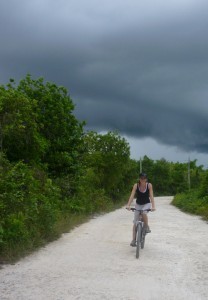 We make one final stop at Bohol Bee Farm – an organic farm and restaurant. Over dinner we check directions for the homeward leg of our journey. Skimming through the guidebook’s pages, I realize that despite our many detours, we’ve managed to visit each of the sites marked on the tiny map. Yet it is in joining those dots that a more complete picture of island life has been revealed.
We make one final stop at Bohol Bee Farm – an organic farm and restaurant. Over dinner we check directions for the homeward leg of our journey. Skimming through the guidebook’s pages, I realize that despite our many detours, we’ve managed to visit each of the sites marked on the tiny map. Yet it is in joining those dots that a more complete picture of island life has been revealed.
About the Author: In spare moments not dedicated to her work as a social justice advocate, Rhiannon Cook writes about travelling, the arts, and the environment. More about her at http://www.australianmusiccentre.com.au/artist/cook-rhiannon
The post Philippines: Biking Bohol appeared first on We Said Go Travel.
Thailand: When Relationships Are Challenged by Extreme Travel
Thank you to Women’s Adventure Magazine for publishing my story, When Relationships Are Challenged by Extreme Travel. My other title was “Sobbing While Snorkeling.”
By Lisa Niver Rajna
Five years ago when George and I flew into Thailand for the first time together, I thought I was going to cry in the airport. I gave up everything and everyone to travel with George for a year. It was a big risk to leave Los Angeles and my job, condo, friends and family; I started our trip with the fear he would leave me in Bangkok.
He threatened to walk away from me forever in the Bangkok Airways check-in line for Phuket. We had left Australia in the middle of the night the day before at about 3:45am–a terrible time to fly–and hadn’t been very nice to each other while we tried to stay awake waiting for our flight. We did not sleep much on the plane, and, upon arrival in Bangkok, decided to fly to Phuket. While waiting in the long line to buy tickets, he got irritated with my concerns and questions about where we were going, what would happen next, and we just both felt exhausted. His solution was to simply say, “do you want me to leave you here?” Since then, we have created new rules. We generally don’t take flights in the middle of the night or early morning, and, if we do have to get up early, we call a truce. No fighting. We survived that episode, and soon after went snorkeling off Long Beach, Koh Phi Phi. While in the water, I cried so hard into my snorkel the whole time and somehow thought he would not notice. I just did not believe I could do it—the relationship, the trip–and I lost it. I just sobbed and swam for shore.
I cried while snorkeling because I was afraid of the boats. I just did not feel like myself. I wondered about the tsunami victims. I could not sleep due to the large number of incredibly itchy bug bites. I lay awake wondering, “Is this paradise?” The beginning of Thailand was the hardest part of the trip for me. I questioned if I made a good decision, wondering if our relationship could sustain itself and if we would ever get married. However, George didn’t want to get married, so that wasn’t going to happen. Would it be enough for me to be with the man I love and not marry him? I decided to come on this trip, but I wondered if I would survive it?
–Quoted from “Traveling in Sin” Thailand Chapter
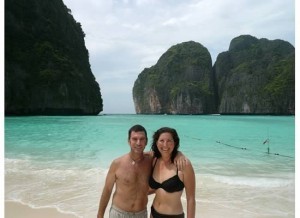 Read the full article: Click here
Read the full article: Click hereLearn more about our memoir, Traveling in Sin.
Traveling in Sin is a HOT NEW Release on Amazon! from Lisa Niver Rajna
The post Thailand: When Relationships Are Challenged by Extreme Travel appeared first on We Said Go Travel.
August 20, 2013
‘Walking’ the Freedom Trail
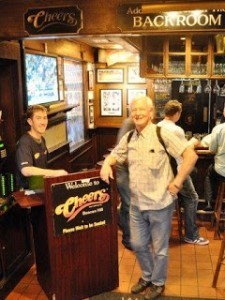 On Valentine’s Day, 2011 I took my oath as a US citizen at the young age of 62. My husband Bill and I were in our second year of RVing across North America. We have the freedom to be where we want to be, do what we want to do. As we were going up the US’ eastern coast, I grew anxious to reach Boston. American History was one of my subjects at the American School in the Philippines where I was awarded a 6-year HS scholarship in 1961. I had a feeling I will get my most intense American education in Boston.
On Valentine’s Day, 2011 I took my oath as a US citizen at the young age of 62. My husband Bill and I were in our second year of RVing across North America. We have the freedom to be where we want to be, do what we want to do. As we were going up the US’ eastern coast, I grew anxious to reach Boston. American History was one of my subjects at the American School in the Philippines where I was awarded a 6-year HS scholarship in 1961. I had a feeling I will get my most intense American education in Boston.
We drove our car from the Gateway to Cape Cod RV Resort, parked at Braintree, thirty miles south of Boston, and rode the Red Line to avoid the city’s infamous traffic jams and high parking prices. We got off at Park Street Station on Beacon Hill and decided to use the Hop-on Hop-off bus service to cover the 2.5 mile Boston Freedom Trail, the unique collection of historic sites.
Unfortunately, the Boston Tea Party ship/museum at Stop #9 was closed for renovation. The story goes that the British government and the East India Company controlled all the tea imported into the colonies. On December 16, 1773, Boston officials refused to return three shiploads to Britain. Colonists sneaked into the ship and threw the tea into Boston Harbor. The British Parliament ordered Boston’s commerce closed until the Company could be repaid. Colonists retaliated by convening the First Continental Congress in Philadelphia. In 1775 the war began.
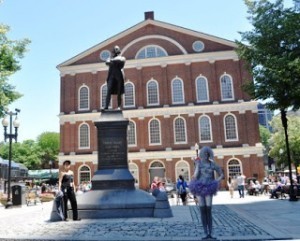 Stop #1 is a close look at Faneuil Hall, a meeting hall since 1742, and the Quincy Marketplace. Stirring speeches by Samuel Adams and others calling for independence from Great Britain had been regularly delivered there. Quincy Market is now a bustling place for diverse eateries. I had my Asian rolls while Bill had his pizza!
Stop #1 is a close look at Faneuil Hall, a meeting hall since 1742, and the Quincy Marketplace. Stirring speeches by Samuel Adams and others calling for independence from Great Britain had been regularly delivered there. Quincy Market is now a bustling place for diverse eateries. I had my Asian rolls while Bill had his pizza!
Paul Revere’s home and the Old North Church are at Stop #2. Revere was a silversmith who alerted Colonial militia in Lexington and Concord, just outside of Boston, of approaching British forces. The signal “One if by land and two if by sea” is said to have been sent via lanterns from the Old North Church midnight of April 18, 1775. The British were forced to go back to Boston.
Stop #3 is the Bunker Hill Monument atop Breed’s Hill where the Battle of Bunker Hill actually took place On June 17, 1775 it became the first major conflict between British and Patriot forces. The Patriots won! The 221 foot granite obelisk has 294 steps and In front is a statue of Col. William Prescott who coined the phrase, “Don’t fire until you see the whites of their eyes”.
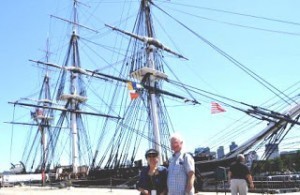 The USS Constitution fondly called ‘Old Ironsides is at Stop # 4 at the Charlestown Navy Shipyard. Still an active frigate of the US Navy, she is the world’s oldest commissioned naval vessel afloat (since 1797). Although she was the third out of six constructed after the 1794 Naval Act, she is known for being undefeated during the War of 1812, an unsuccessful attempt by Great Britain to reconquer the USA.
The USS Constitution fondly called ‘Old Ironsides is at Stop # 4 at the Charlestown Navy Shipyard. Still an active frigate of the US Navy, she is the world’s oldest commissioned naval vessel afloat (since 1797). Although she was the third out of six constructed after the 1794 Naval Act, she is known for being undefeated during the War of 1812, an unsuccessful attempt by Great Britain to reconquer the USA.
Stop #5 is the site of the Boston Massacre. British troops had been stationed in Boston since 1768 to protect its officials who were enforcing unpopular laws. On March 5, 1770 a mob subjected a British sentry to verbal abuse and harassment. Eight additional soldiers came to his aid. They fired into the crowd, without orders, instantly killing three and causing the death of two others later, foreshadowing the American Revolution 5 years later.
The Old Granary Burying Ground near Park Street Church, Stop #6, is where Paul Revere, Sam Adams, John Hancock, and members of the Franklin family are buried. Though already closed, we were still able to take pictures from the sidewalk. Stop # 7, the King’s Chapel and burying ground, and Stop #8, the Copp’s Hill Burying Ground, were also closed.
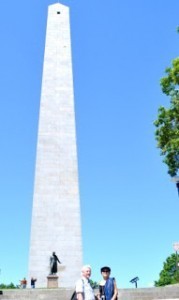 That gave us some time to enjoy the Boston Commons on Beacon Hill. There was a carousel, a beautiful pond, a Civil War memorial, and a quaint fountain from which one can see the gleaming gold dome of the Massachusetts State House. Just opposite the Commons, at the end of the ‘walk’, we did just what we wanted to do. Bill had refreshing beer and I had iced tea at Cheers, the pub that was the home of the popular TV series!
That gave us some time to enjoy the Boston Commons on Beacon Hill. There was a carousel, a beautiful pond, a Civil War memorial, and a quaint fountain from which one can see the gleaming gold dome of the Massachusetts State House. Just opposite the Commons, at the end of the ‘walk’, we did just what we wanted to do. Bill had refreshing beer and I had iced tea at Cheers, the pub that was the home of the popular TV series!
Just like at Cheers, I had a taste of it in high school. But now I have the freedom to roam around the vastness of America, the beautiful, enjoying its early heroes’ genius and sacrifice with an American husband by my side. After all, I am now an American!
About the Author: After stints as CEO of Philippine pioneers in information technology, Carol migrated to the US to take care of grandkids, become a business counselor in SCORE, and serve as adjunct professor in three schools of higher learning in Seattle. Soon after she married Bill in 2008, they started and recently completed a 4-year cruise of North America in an RV which is written about in a blog . Carol has a BS in Math, an MBA, and a DPA abd from the University of the Philippines.
The post ‘Walking’ the Freedom Trail appeared first on We Said Go Travel.
Freedom Fairy Tales – Malta
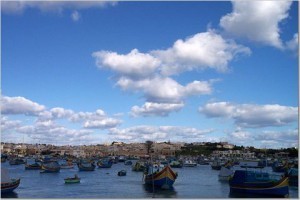 In the middle of the Mediterranean Sea, slightly below Sicily, rests Malta, the largest island in the Maltese archipelago. Valletta, the capital of Malta, is a fortified city built on Mount Sceberras between two harbors with defense in mind during the architectural planning.
In the middle of the Mediterranean Sea, slightly below Sicily, rests Malta, the largest island in the Maltese archipelago. Valletta, the capital of Malta, is a fortified city built on Mount Sceberras between two harbors with defense in mind during the architectural planning.
Walking through the entrance is like being magically transported back in time and the steady flow of people through the gates is reminiscent of the Renaissance. An enchanted feeling descends as if you are in a fairy tale. A myriad of shops, vendors, and restaurants can be found by wandering the uneven streets or traversing the famous steps of Valletta, built for the Knights walking with heavy armor as these were pre-spandex times; the very steps bemoaned by Lord Byron for their non-conformity.
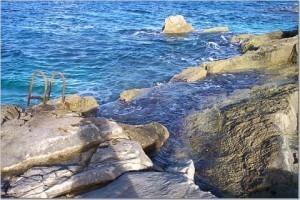 Malta is an island of limestone buildings and fortified cities complete with narrow, winding paths. It is an island of glorious harbors filled with brightly colored fishing boats called Luzzus, all painted with the eye of Osiris on their bows to ward off evil and protect the fishermen while out at sea. The people are hospitable, generous, kind, superstitious, strong, and extremely stubborn. The countryside is marked by winding rock walls fencing off farms and interspersed with prickly pear plants that seem to burst from the rock barriers, their fruit a sweet display of spiky, red fireworks.
Malta is an island of limestone buildings and fortified cities complete with narrow, winding paths. It is an island of glorious harbors filled with brightly colored fishing boats called Luzzus, all painted with the eye of Osiris on their bows to ward off evil and protect the fishermen while out at sea. The people are hospitable, generous, kind, superstitious, strong, and extremely stubborn. The countryside is marked by winding rock walls fencing off farms and interspersed with prickly pear plants that seem to burst from the rock barriers, their fruit a sweet display of spiky, red fireworks.
The Mediterranean Sea surrounds the islands, lapping idly against swimming pool ladders bolted into the rocky coast and also happens to be a breeding ground for sharks. Shark infested waters may have a Princess Bride ring to it, but it is also a fitting analogy for the suitors of Malta; sharks circling and waiting patiently for an opportune moment to seize its prey.
Inhabited since early times, it hosts some of the world’s most ancient ruins. It has been invaded by many cultures over centuries; its strategic location long understood by many a predator shark. In recent times, Hitler was amongst the long list of those desiring Malta, resulting in it being bombed more heavily than anywhere else during World War II. Catacombs and churches became shelters during the massive and continual air raids. In 1942, air raids reached a high point and 282 were sounded in April alone.
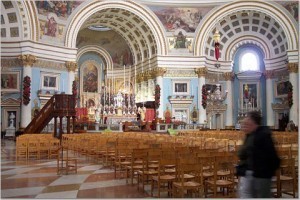 My mother was born in Malta, so occasionally I would hear stories from my grandparents. One such story involved my grandfather who was in a bell tower when a bomb fell through without exploding.
My mother was born in Malta, so occasionally I would hear stories from my grandparents. One such story involved my grandfather who was in a bell tower when a bomb fell through without exploding.
During a family trip to Malta, we visited the Mosta Dome where this occurred. The exterior is graced with pillars and statues while the interior impresses with ornate details on every surface including the walls, floors, and ceiling. The dome itself is incredible, boasting as the world’s fourth largest unsupported dome. Heaven is exquisitely expressed in its material confines and one only need a sense of beauty to gaze up into divine infinity.
We were given a special tour by a family friend and made our way up one of the bell towers, which is where my grandfather was one day long ago. The air raid sirens had sounded and my grandfather, having a love for planes, ran up to the bell tower to get a good look at the war planes flying overhead. On April 9th, 1942, a bomb was dropped from a plane into the Mosta Dome. It did not explode and was hailed as The Bomb Miracle.
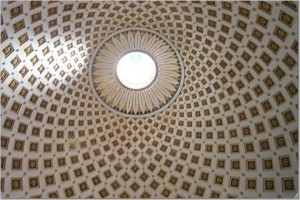 We walked along a broad ledge of the Mosta Dome and continued climbing to the top of the dome, which held sweeping views of the surrounding area. While a sermon was being given below, we stood on top and a painting of Jesus was pointed out to us where his head was discolored. It was explained in whispered hushes that the bomb had crashed through the dome, bounced off of the head of Jesus on the painting, and fell to the ground without exploding.
We walked along a broad ledge of the Mosta Dome and continued climbing to the top of the dome, which held sweeping views of the surrounding area. While a sermon was being given below, we stood on top and a painting of Jesus was pointed out to us where his head was discolored. It was explained in whispered hushes that the bomb had crashed through the dome, bounced off of the head of Jesus on the painting, and fell to the ground without exploding.
We made our way down and assembled inside the bell tower. At noon our guide rang the bells, hands pulling cords and feet pushing pedals in a symphony of movement and sound. Tears streamed down my face as the bells rang deafeningly loud.
Malta has been invaded by many throughout history. Independence was gained from Britain in 1964, but I often think about my grandfather, running up to the bell tower in 1942 to get a good look at the planes flying overhead and the miracle bomb that did not explode. If it had, I would not be here today. The miracle bomb is one of many events that have given me the freedom simply to exist, even despite a terrible war. In my memory’s landscape, freedom rings with the sweet sound of bells, and has the indelible glow of a fairy tale.
About the Author: Naomi Fino currently resides in California, loves to travel, write, sew and design, fire dance, and has a healthy appetite for a good “Adventura”. Visit her new blog, Naomi Fino Travel.
The post Freedom Fairy Tales – Malta appeared first on We Said Go Travel.
Kenya: Holding Elijah
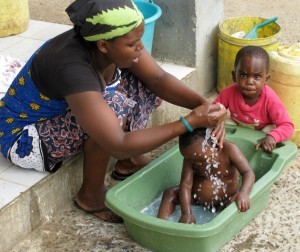
Bath time at Calvary Zion is also a great way to beat the Kenyan heat.
by Ken Budd
I’m carrying two-year-old Elijah, seeking shade to escape the Kenyan sun. My wife Julie and I are volunteering for two weeks at the Calvary Zion children’s home near Mombasa, helping (we hope) the home’s three “mothers,” who care for 40 kids, from infants to teens.
“Ah-dahh,” says Elijah.
It’s his one word. He repeats it, pointing at a lone tree, then the one-level house.
“Ah-dahh.”
“Good point,” I say.
“Ah-dahh.”
Most of Calvary Zion’s young residents are at school. Julie and I watch the remaining toddlers and help with simple yet sizeable tasks, from washing dishes to folding clothes.
“I know God loves these children,” the home’s founder, Jane Karigo, told us our first day. “They deserve fulfillment, and they deserve opportunities, like any other children.”
We’re both moved by Jane’s mission—but I wonder how much we’re helping. I’ve wondered this at every stop on my volunteer journey: a six-country quest to find purpose by helping others after my father’s sudden death. But I particularly wonder it here, because the painful, inescapable fact about Calvary Zion is that every child has suffered. Some lost their parents to HIV. Others were abandoned: one infant was found in a department store bathroom, discarded by his mother. Elijah’s incestuous birth to a 14-year-old mother brought shame to the family, and he spent his first year of life in isolation—no nurturing, no love. When he arrived at Calvary Zion, he barely knew how to eat.
“He just lay there with his mouth open,” one of the mothers said.
Elijah often runs to us in his baby-ish, bowlegged way, wanting to be held, and I think—How can you say no to this child? But it worries me: we’ve entered these kids’ lives and then, boom—we’ll leave. The bulk of our time is spent with the mothers, but small children can feel quick attachments to volunteers, creating a cycle of abandonment, a journal article on South Africa orphans found.
Criticism of volunteers has intensified since 2010, when Julie and I worked at Calvary Zion. The controversy stems largely from the exploitation of children in Cambodia, where unscrupulous orphanages trap kids in squalor to attract funds from donors and volunteers (many of the “orphans” have at least one parent). In July 2013, the UK-based travel agency ResponsibleTravel.com removed orphanage volunteering programs from its site. Mainstream media stories have questioned if volunteers do more harm than good; bloggers have blasted voluntourists as guilt-ridden neocolonialists more interested in boosting their self-esteem than in helping others.
So by trying to do good, were Julie and I doing, you know… bad?
I’d shared my concerns in Kenya with our host, Karimu. She’s a local woman who runs volunteer programs for Travellers Worldwide, an organization offering everything from medical internships to marine programs. We stayed with Karimu and her kids, which was a joy, whether eating nyama choma or jumping rope with her niece.
Karimu thinks volunteers are valuable to Calvary Zion.
“The children have the mothers and Jane,” she said of the home. “They have plenty of familiar faces. They get attention from you guys. No one has time to cuddle the little ones, and if even if there was time there are too many kids. Would the babies be better off if you didn’t hold them? And what about the older kids you help with their homework?”
The critics rarely ask locals what they think about volunteers, so recently I contacted Jane and asked a simple question: are volunteers useful?
Absolutely, she said by e-mail—but sometimes it’s problematic. A British volunteer insisted on taking the kids for a play day at a go-cart track. His intentions were good, “But the children won’t remember the go-carts when they are crying for bread,” said Jane. Another volunteer gave a child an iPod, which the boy sold for 200 shillings, fueling jealousy and fights. Sometimes volunteers make adoption promises they can’t keep, giving the children false hope.
[image error]
Feeding babies is one of many tasks for the “mothers” at the Calvary Zion Children’s Home in Kenya.
So the problems are real—and yet so are the benefits. Julie and I did work the mothers don’t have time for, whether washing windows or sorting donated clothes. We helped with daily chores, like cutting vegetables and ironing school uniforms. But there’s an intangible benefit as well, which I found throughout my volunteer travels: interactions occur that would never happen otherwise. People learn about other people. Stereotypes are smashed. When the mothers taught Julie to make ugali, they laughed as she labored over the pot. I found this same effect when I volunteered at a special needs school in China: for the teachers, we were a happy novelty, a break from the monotony of difficult days.
Our team leader in China said that short-term volunteers are like links in a chain. I’d dismissed that as orientation rhetoric, but I see some truth in it now, mainly because of Elijah.
The mystery of Elijah is the anguish that must lurk inside; the blankness that tugs his face, widening his eyes. But those big eyes never look blank. Those big eyes made me think there’s something fierce, and smart, and thoughtful inside.
Here’s the thing I can’t shake:
Before we came to Kenya, some volunteers held Elijah. And when we were there, we held Elijah. And after we left, other volunteers held Elijah. And that is far, FAR from a perfect system. But it seems better than me to the alternative. Because without volunteers, fierce Elijah, so deprived of human contact, would’ve spent much of his time on the floor, alone. The mothers love Elijah, but individual attention is a necessity in short supply.
The children’s well-being is all that matters, whether in Kenya or Cambodia. If volunteer programs are harming children, those programs should end. But successful programs and successful homes should not be ignored. Without Jane Karigo, the children of Calvary Zion would live on the streets. Instead, they go to school. They learn. They eat. They grow. In July 2013, three of the home’s children, now 18-year-old women, opened their own business. Volunteers, in their own microscopic way, have helped support this.
“This is my mission,” Jane said of Calvary Zion. “If I don’t care for these children, who will?”
About the Author: Ken Budd is author of the award-winning memoir The Voluntourist—A Six-Country Tale of Love, Loss, Fatherhood, Fate, and Singing Bon Jovi in Bethlehem. All of his earnings from the book are going back to the places and organizations where he volunteered. Since May 2012, money from The Voluntourist has paid annual school fees for 11 of the children at Calvary Zion. You can connect with Ken on Twitter and Facebook.
The post Kenya: Holding Elijah appeared first on We Said Go Travel.
Freedom: Finding My Way Along the Causeway
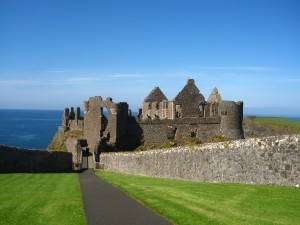 Finding My Way Along the Causeway
Finding My Way Along the Causeway
Take-off is something I always look forward to when traveling. I love when the plane finishes taxiing, does an about-face on the runway, and suddenly starts to gain momentum. I am riding rolling thunder and my obligations are officially behind me the moment those tires leave the earth! This is freedom!
Liberating myself from the ties that bind me to – what is essentially my own culture – allows me to fully immerse myself in a different one. I commit to exploring new things and try to experience life like a local as best I can. The simple act of taking those first few steps in a new place makes me feel independent and alive! Whether those steps are tentative or confident, I am taking my life into my own hands.
Without a doubt, a place that heightens my sense of independence is Northern Ireland. The Ulster landscape is full rolling hills that seem to ramble on forever – just inviting you to roam the lush green carpet they lay out for you. If you stay the course and venture beyond these hills, the low stone walls, and verdant pastures, you are rewarded with dramatic seaside cliffs punctuated by waterfalls and the awe-inspiring natural splendor of The Giant’s Causeway. Rising up from the mystic, this is a land born of legend and bred in magic.
Yet, in contrast to this heavenly splendor, there remain earthy indications of a troubled and not-too-distant past. There was a time when this beautiful country was greatly restricted by widespread violence and strife. Large political murals, dual signage with both nationalist and unionist terms, and a lack of flags on public buildings serve as poignant reminders of The Troubles, which lasted from 1968-1998. Personally, not being Irish, I feel I am ill-equipped to comment on the state of their national psyche or lingering sentiments. I can only speak for myself when I say that paying tribute to these struggles certainly heightens my own sense of personal independence. To travel around this area and witness the healing of these fresh wounds is something that has enriched me, and I have a deep appreciation for this experience.
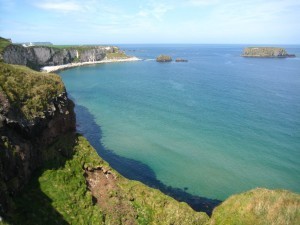 Forged by fire, the strength of the Irish people is matched by their overwhelming kindness – which made me feel like more of a friend than a guest. Curiosity on either my part or theirs served as a natural jumping-off point for interesting conversations that led to a better understanding of the culture and mentality. To my great delight, people were quick to share a story and a laugh while in restaurants, in hotels, on the bus, the train, or bicycles! (My favorite example of this was when a rattling arose from under our bus and the driver pulled over and said “I fear fer me God and I fear fer me dog!” Luckily for us, his God, and his dog, it was just a tree branch! The whole bus was suddenly full of relieved Irish laughter.) This warm hospitality only put me further at ease while traversing the region. As a woman traveling alone, I felt inspired as I walked along the walls of Londonderry/Derry. I felt safe in Belfast as I explored the Titanic Museum and navigated my way to the birthplace of the Belfast Cowboy himself, Van Morrison. I felt uninhibited as I stood in the wildflowers, looking out into the Irish Sea from the loamy cliffs of Portstewart. I fell more in love with this place with every wave that crashed onto the shore far below.
Forged by fire, the strength of the Irish people is matched by their overwhelming kindness – which made me feel like more of a friend than a guest. Curiosity on either my part or theirs served as a natural jumping-off point for interesting conversations that led to a better understanding of the culture and mentality. To my great delight, people were quick to share a story and a laugh while in restaurants, in hotels, on the bus, the train, or bicycles! (My favorite example of this was when a rattling arose from under our bus and the driver pulled over and said “I fear fer me God and I fear fer me dog!” Luckily for us, his God, and his dog, it was just a tree branch! The whole bus was suddenly full of relieved Irish laughter.) This warm hospitality only put me further at ease while traversing the region. As a woman traveling alone, I felt inspired as I walked along the walls of Londonderry/Derry. I felt safe in Belfast as I explored the Titanic Museum and navigated my way to the birthplace of the Belfast Cowboy himself, Van Morrison. I felt uninhibited as I stood in the wildflowers, looking out into the Irish Sea from the loamy cliffs of Portstewart. I fell more in love with this place with every wave that crashed onto the shore far below.
This terrain is a natural fit for the independent traveler. Practically speaking, it is accessible and easy to maneuver around in. I found some delicious food and can understand the language…usually. However, the will of the independent traveler is something beyond practicality. There is a wildness of spirit and openness of heart that is innately mimicked by Northern Ireland itself – and that is what satiates my wanderlust.
I get back on the plane to return home and find myself a changed woman. I am of the belief that, when done correctly, travel should always change you. How can it not when you now carry the stories of others mixed in with your own? You’ve seen and done new things, and perhaps stretched your comfort level a little further than it has ever gone before. (Oh! There was that one hostel…!)
When the engines roar to life and the tires leave terra firma, I look at County Antrim falling away from me. An updated version of myself, fresh off a new adventure and full of lively experiences, I return home to those obligations I eagerly left behind. However, this time, “freedom” means something more. I will forever carry with me the beauty and power of this place, and of these people.
About the Author: Megan Varano was born in the Coal Region of Pennsylvania and came of age in Boulder, Colorado. After a few years of working as a baker, wandering around the United States and Europe, she has returned to the Rocky Mountains she loves and works in the aerospace industry while plotting her next much-anticipated adventure.
The post Freedom: Finding My Way Along the Causeway appeared first on We Said Go Travel.
We Said Go Travel
We Said Go Travel is a global community of over sixteen hundred writers with articles from every continent.
Stories are shared with photos and video from a perspective of the transformative power of travel. We Said Go Travel has hosted live and online events as well as travel writing contests around the world. ...more
- Lisa Niver's profile
- 57 followers


